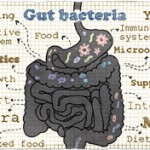Lara C. Pullen, PhD, is a medical writer based in the Chicago area.
Reference
ad goes here:advert-1
ADVERTISEMENT
SCROLL TO CONTINUE
- Stoll ML, Kumar R, Lefkowitz EJ, et al. Fecal metabolomics in pediatric spondyloarthritis implicate decreased metabolic diversity and altered tryptophan metabolism as pathogenic factors. Genes Immun. 2016 Oct 27. doi: 10.1038/gene.2016.38. [Epub ahead of print]



